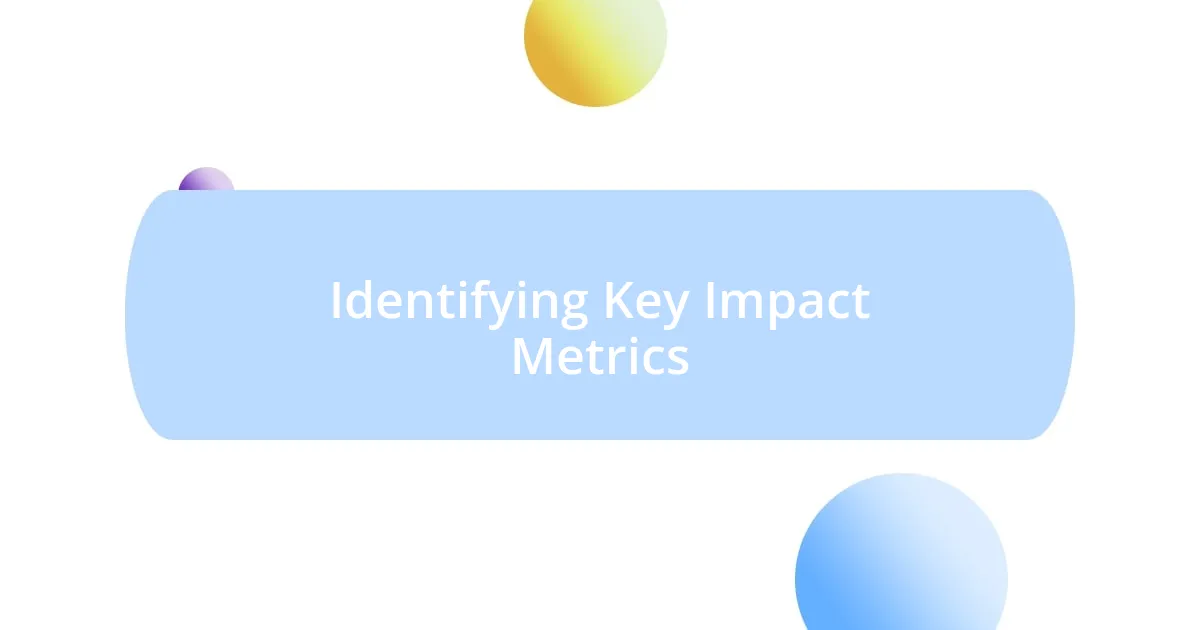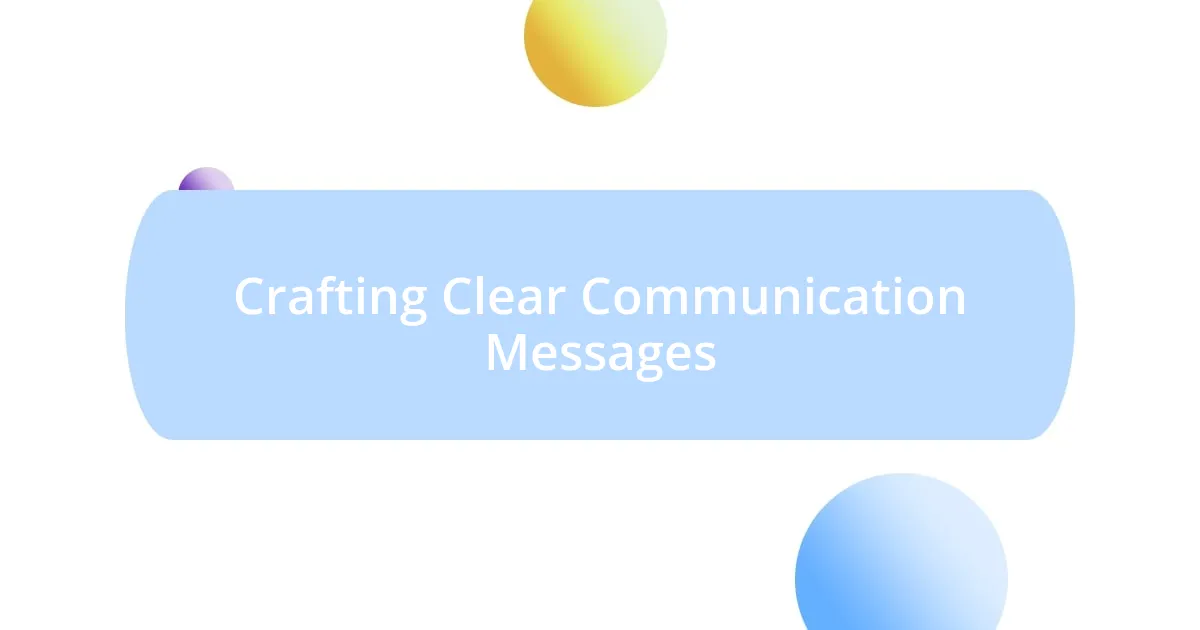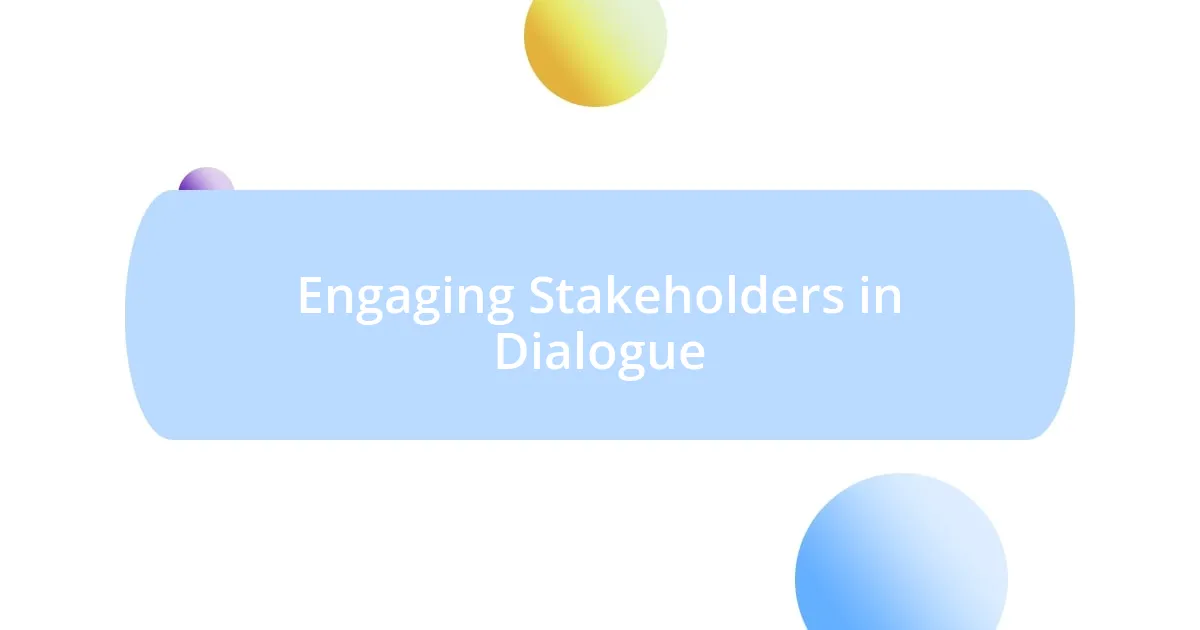Key takeaways:
- Active listening and informal conversations can unveil stakeholders’ hidden needs, fostering trust and collaboration.
- Identifying key impact metrics together with stakeholders enhances engagement and ensures metrics resonate with their true objectives.
- Clear communication, free from jargon and reinforced with visuals, is essential for stakeholder understanding and connection.
- Encouraging open dialogue and gathering both formal and informal feedback enriches relationships and provides actionable insights for improvement.

Understanding Stakeholder Needs
Understanding stakeholder needs is like peeling back layers of an onion; the deeper you go, the more complex it becomes. I vividly remember a project where I thought I fully grasped what our stakeholders wanted. Yet, during a meeting, their expressions told a different story. It was a powerful reminder that assumptions could lead us astray.
To truly connect with stakeholders, I’ve learned the importance of active listening. During one project, I made it a point to hold informal coffee chats with team members, allowing them to voice their concerns and aspirations. This simple gesture not only nurtured trust but also unveiled needs I hadn’t considered before. Isn’t it fascinating how open dialogue can reveal hidden perspectives?
When you understand what drives your stakeholders, you can tailor your communication effectively. I often think about how people’s motivations vary—some seek financial gains, while others value sustainability or community impact. By acknowledging these unique drivers, I’ve been able to foster more meaningful collaborations. Have you ever wondered how understanding someone’s needs can transform your working relationship? It’s truly remarkable!

Identifying Key Impact Metrics
Identifying key impact metrics is a process that requires both analytical skills and a degree of intuition. I’ve discovered that metrics should not just be numbers on a page; they must resonate with the stakeholders’ true objectives. For instance, in a recent sustainability project, we focused on carbon footprint reduction not just as a measure of success, but as a meaningful goal that connected with stakeholders’ values and priorities. This approach made the data more compelling and relevant, enhancing engagement.
As I delve deeper into metrics, I often find that less is more. During a previous initiative, I initially created an overly ambitious dashboard filled with dozens of metrics. However, feedback showed that stakeholders felt overwhelmed. Eventually, I narrowed it down to a handful of critical indicators, like customer satisfaction and return on investment. The impact was significant; the clarity helped stakeholders see our progress without being lost in the details.
In my experience, it’s vital to involve stakeholders in selecting these metrics. When I led a team to implement performance indicators, I invited key team members to brainstorm metrics that would be valuable to them. Not only did they feel more invested in the process, but the metrics we identified together reflected their concerns and aspirations. This collaboration enriched our reporting and solidified a sense of ownership among every participant.
| Metric Type | Example |
|---|---|
| Quantitative | Percentage increase in sales |
| Qualitative | Stakeholder satisfaction surveys |
| Operational | Average response time for customer inquiries |
| Financial | Cost savings from improved efficiencies |

Crafting Clear Communication Messages
Crafting messages that are clear and impactful requires thoughtfulness and precision. I recall one time when I had to communicate complex project updates to stakeholders with varying levels of expertise. I took the time to break down technical jargon into straightforward language. As I watched their eyes light up with understanding, it reinforced the importance of clarity in communication. It’s truly rewarding to see stakeholders engaged and connected to the message.
When developing clear communication messages, consider these key elements:
- Focus on the Core Message: Identify the main point you want to convey and stick to it.
- Use Simple Language: Avoid jargon unless it’s necessary; clarity trumps complexity every time.
- Be Concise: Keep sentences short and to the point to maintain engagement.
- Incorporate Visuals: When data is involved, graphs or charts can enhance understanding significantly.
- Encourage Feedback: Invite your audience to ask questions or share their thoughts, creating an interactive dialogue.
I firmly believe that the way we communicate can make or break stakeholder relationships. I once participated in a project presentation where my team used a storytelling approach. We framed our findings within a narrative, relating our achievements to the stakeholders’ vision. The feedback was overwhelming – not only did they grasp our results, but they also felt emotionally connected to our journey. This experience reiterated for me that crafting relatable, clear messages is essential for communicating impact effectively.

Utilizing Visual Aids Effectively
Utilizing visual aids effectively has been a game changer in my communication toolbox. I vividly remember a presentation where I employed a simple infographic to demonstrate project milestones. Watching the audience lean in, nodding in understanding, really highlighted for me how visuals can turn abstract data into relatable stories. By distilling information into an accessible format, I found that even the most complex concepts became clearer and more engaging.
A crucial lesson I’ve learned is to tailor visual aids to the audience’s context. Once, I used overly intricate graphs packed with details for a diverse group of stakeholders. The confusion was palpable, as many struggled to make sense of the data. After that experience, I adopted a more minimalist approach, using straightforward visuals that emphasized key takeaways. Isn’t it surprising how stripping down complexity can elevate comprehension?
The emotional impact of visuals shouldn’t be underestimated. I recall using a powerful chart that showed how our initiatives positively affected community engagement over time. The moment I saw stakeholders’ faces light up with pride and connection made me realize that effective visuals don’t just share data; they evoke feelings and inspire ownership. When I reflect on those experiences, it’s clear that when visuals align with the audience’s emotions, the messaging resonates far deeper, paving the way for impactful dialogue.

Engaging Stakeholders in Dialogue
Engaging stakeholders in dialogue is one of my favorite aspects of communication. I remember a strategic meeting where I decided to open up the floor for discussions rather than solely presenting my ideas. This shift allowed stakeholders to voice their concerns and suggestions, creating a rich tapestry of perspectives that I hadn’t anticipated. It was like unlocking a treasure chest of insights—having everyone contribute turned a routine update into a collaborative brainstorming session. Don’t you find that some of the best solutions come when everyone has a chance to share their thoughts?
Another experience that stands out to me was during a quarterly review. I approached each stakeholder individually beforehand, asking for their thoughts on what they wished to discuss. It was surprising how this simple act of pre-engagement transformed our conversation. Stakeholders felt valued and heard, leading to a more robust dialogue later. This taught me that proactive engagement isn’t just a nice-to-have; it transforms the tone of discussions and fosters a collaborative spirit. Do you think nurturing avenues for honest feedback can lead to stronger stakeholder relationships?
When dialogue flows freely, it cultivates trust. I once facilitated a workshop where stakeholders participated in interactive exercises designed to elucidate their goals and challenges. I noticed that as we delved deeper into discussions, vulnerability emerged, and people began to share their struggles openly. This vulnerability not only deepened our connections but also provided powerful insights that shaped our project direction. In my view, fostering an environment where stakeholders feel safe engaging in dialogue is absolutely crucial. How often do you think organizations truly create that sense of safety?

Gathering Feedback for Improvement
Gathering feedback is a critical step in my journey toward improvement. I once implemented a feedback survey after a project launch, and the responses were eye-opening. Stakeholders shared diverse perspectives, some of which I hadn’t even considered. I remember reading one comment that struck me: “We felt left out of the decision-making process.” That brutal honesty pushed me to reflect on my communication strategies. Isn’t it fascinating how sometimes the toughest feedback can lead to the most significant growth?
In another instance, during a follow-up meeting, I asked for input on our latest initiative. Rather than simply seeking thumbs up or down, I encouraged stakeholders to share not just their opinions but also their feelings about the project. Many expressed excitement, but I was particularly moved when one stakeholder candidly shared their anxiety over the project’s implementation timeline. That feedback was invaluable, enabling me to make more informed adjustments. Don’t you agree that understanding emotional context can transform mere feedback into actionable insights?
I also remember a time when I hosted a casual lunch to collect informal feedback. Sitting together, I found that people were much more relaxed and open. It was in that setting that someone voiced a concern about our communication frequency. Their words resonated with others, leading to a spirited discussion about how we could keep everyone better informed. This experience taught me that feedback doesn’t always have to come in formal settings; sometimes, the best insights emerge in relaxed environments. How often do you think about the power of creating an atmosphere where feedback can flow naturally?

Measuring Communication Effectiveness
Measuring communication effectiveness is pivotal in ensuring that my messages resonate with stakeholders. For instance, after rolling out a new initiative, I set up a follow-up survey that directly asked how stakeholders felt about the clarity of the information provided. The results were revealing; some respondents praised the clear communication, while others pointed out areas that felt muddled. Reflecting on this feedback made me realize that perception is just as important as intention. Have you ever had a moment where you thought you communicated clearly, only to find out that the message was lost in translation?
I also pay close attention to engagement levels during presentations or meetings. I recall one specific instance where I noticed participants were distracted, scrolling through their devices rather than engaging with the content. It dawned on me that I hadn’t crafted the presentation to align with their interests and needs. This experience highlighted the importance of being attuned to audience reactions, as it can provide real-time feedback that helps me adjust my approach. Isn’t it interesting how a simple shift in delivery can dramatically change audience involvement?
Moreover, I’ve found analyzing follow-up conversations to be incredibly insightful. After a stakeholder meeting, I reached out to participants individually to gauge their takeaways and feelings about our discussions. One stakeholder, usually quiet, surprisingly shared that our dialogue had inspired them to advocate for better cross-department collaboration. Their excitement was palpable in their tone. This taught me that the true measure of effectiveness lies not just in immediate reactions, but in how well the communication plants the seeds for ongoing dialogue and action. What transformations have you seen arise from simply checking in after a meeting?














